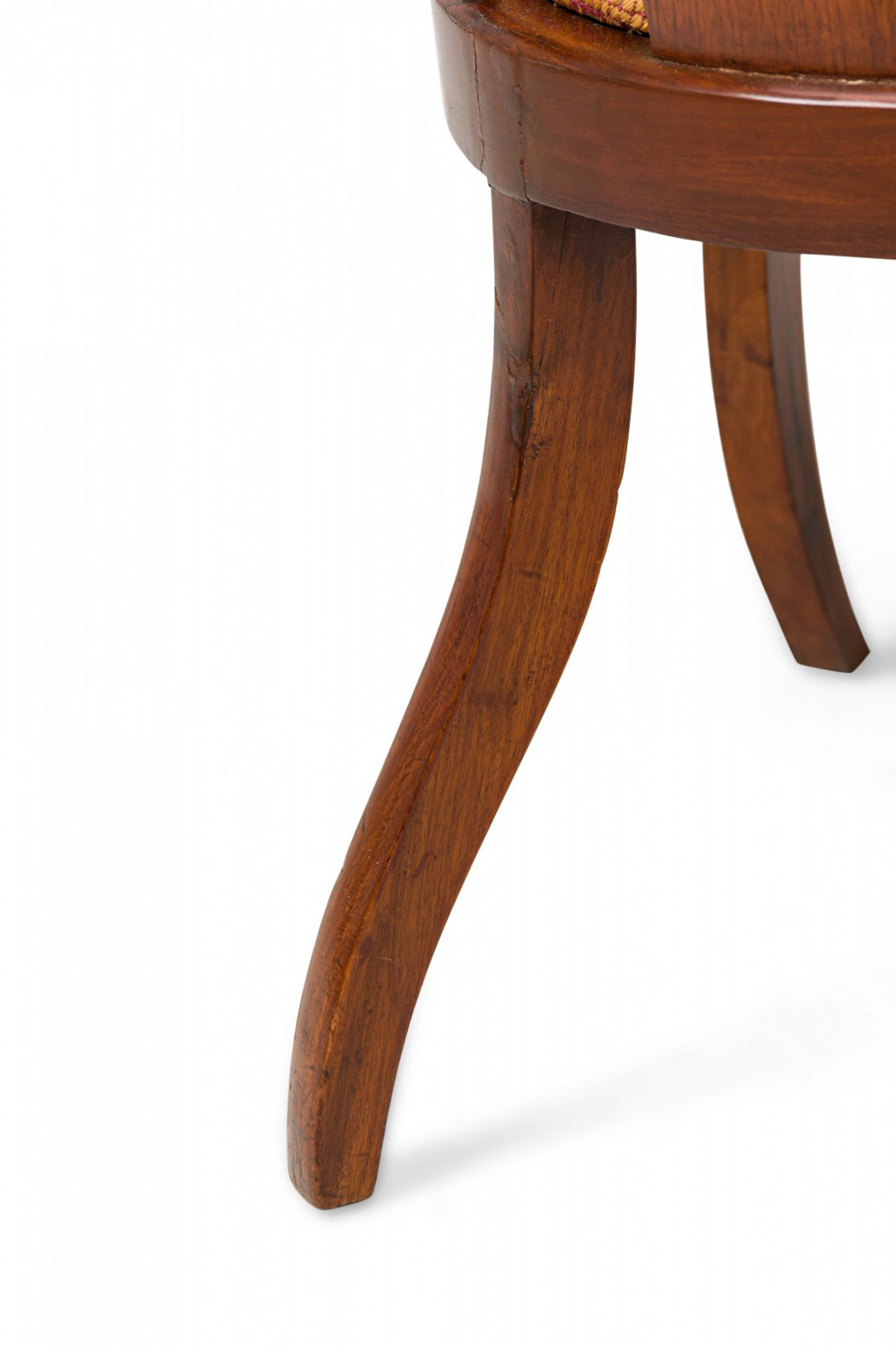X
{{ modalTitle }}
PLEASE FILL IN THE REQUIRED FIELDS.X
X
{{ modalTitle }}
Choose one of the options below.X
ITEM SUCCESSFULLY
ADDED TO PROJECT
Set of 6 American Empire Carved Wood Gondola Dining Chairs with Acanthus Weave Upholstered Seats
 American
American Empire
Empire Seating
Seating Side Chairs
Side Chairs
Newel Warehouse
32-00 Skillman Ave
Long Island City NY - 11101
 (212) 758-1970
(212) 758-1970
Set of 6 American Empire Carved Wood Gondola Dining Chairs with Acanthus Weave Upholstered Seats

Newel Warehouse
32-00 Skillman Ave
Long Island City NY - 11101
 (212) 758-1970
(212) 758-1970
 Seating
Seating Side Chairs
Side ChairsEmpire
A period of design during the reign of Napoleon I. It was most prevalent between 1800 and the late 1820s. It was considered the second wave of neoclassicism and marked a return to ostentatious design, a departure from the more conservative Directoire period that directly preceded it. It was intended to idealize the majesty of the French state and Napoleonic rule. Mahogany was the most popular wood during the period, and brass ornamentation and dark marbles were in vogue. Greek, Roman, and Egyptian motifs were also widely used. The style spread throughout Europe and appeared in America in some of Duncan Phyfe's work.
Mahogany
Mahogany is a straight grained hard wood with silky texture, ranging in color from dark brown to red. Furniture made from mahogany became popular in Britain from Mid-18th Century on, spreading throughout Europe.
Acanthus
Acanthus, also called Bear’s Breeches, is a stylized leaf that is native to the Mediterranean. The acanthus leaf motif was first used in classic Greek and Roman architecture, specifically in the design of Corinthian columns and pillars. Today, the acanthus symbolizes longevity and immortality of the soul.
Veneer
A wood finishing technique in which thin sheet of fine wood is applied to a the surface of a coarser wood or other structural material for decoration. Veneer is used to give furniture pieces a finer, more pleasing appearance. It was first used in ancient Egypt, classical Greece, and Rome, but did not appear again until the 17th Century in the Netherlands.
Empire
A period of design during the reign of Napoleon I. It was most prevalent between 1800 and the late 1820s. It was considered the second wave of neoclassicism and marked a return to ostentatious design, a departure from the more conservative Directoire period that directly preceded it. It was intended to idealize the majesty of the French state and Napoleonic rule. Mahogany was the most popular wood during the period, and brass ornamentation and dark marbles were in vogue. Greek, Roman, and Egyptian motifs were also widely used. The style spread throughout Europe and appeared in America in some of Duncan Phyfe's work.
Mahogany
Mahogany is a straight grained hard wood with silky texture, ranging in color from dark brown to red. Furniture made from mahogany became popular in Britain from Mid-18th Century on, spreading throughout Europe.
Acanthus
Acanthus, also called Bear’s Breeches, is a stylized leaf that is native to the Mediterranean. The acanthus leaf motif was first used in classic Greek and Roman architecture, specifically in the design of Corinthian columns and pillars. Today, the acanthus symbolizes longevity and immortality of the soul.
Veneer
A wood finishing technique in which thin sheet of fine wood is applied to a the surface of a coarser wood or other structural material for decoration. Veneer is used to give furniture pieces a finer, more pleasing appearance. It was first used in ancient Egypt, classical Greece, and Rome, but did not appear again until the 17th Century in the Netherlands.
Empire
A period of design during the reign of Napoleon I. It was most prevalent between 1800 and the late 1820s. It was considered the second wave of neoclassicism and marked a return to ostentatious design, a departure from the more conservative Directoire period that directly preceded it. It was intended to idealize the majesty of the French state and Napoleonic rule. Mahogany was the most popular wood during the period, and brass ornamentation and dark marbles were in vogue. Greek, Roman, and Egyptian motifs were also widely used. The style spread throughout Europe and appeared in America in some of Duncan Phyfe's work.
Mahogany
Mahogany is a straight grained hard wood with silky texture, ranging in color from dark brown to red. Furniture made from mahogany became popular in Britain from Mid-18th Century on, spreading throughout Europe.
Acanthus
Acanthus, also called Bear’s Breeches, is a stylized leaf that is native to the Mediterranean. The acanthus leaf motif was first used in classic Greek and Roman architecture, specifically in the design of Corinthian columns and pillars. Today, the acanthus symbolizes longevity and immortality of the soul.
Veneer
A wood finishing technique in which thin sheet of fine wood is applied to a the surface of a coarser wood or other structural material for decoration. Veneer is used to give furniture pieces a finer, more pleasing appearance. It was first used in ancient Egypt, classical Greece, and Rome, but did not appear again until the 17th Century in the Netherlands.

















